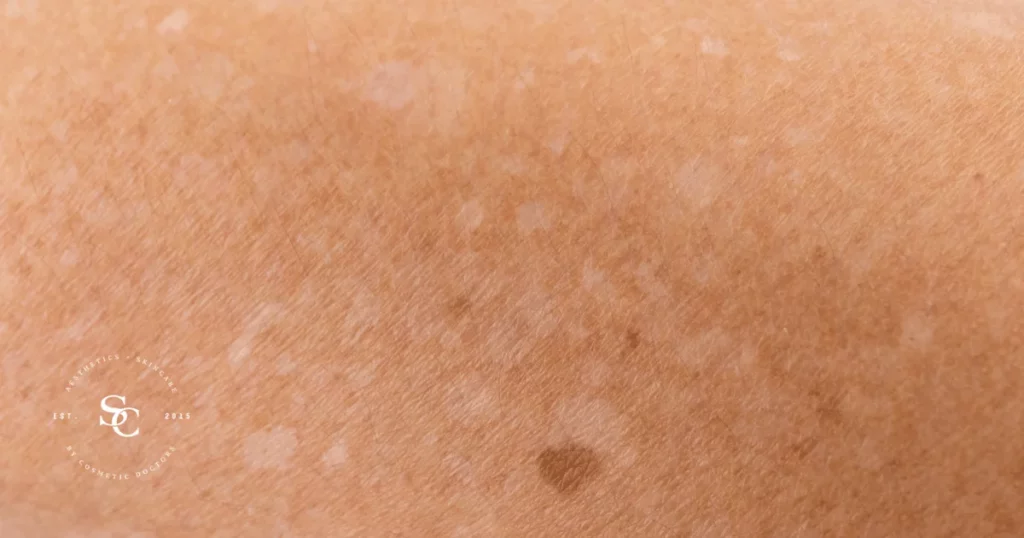Understanding White Spots on the Skin: An Overview
White spots on the skin, also known as hypopigmentation, are areas where the skin loses its natural color, resulting in lighter or white patches. These spots can appear on any part of the body and may vary in size and shape. In this comprehensive guide, we will explore the nature, causes, types, treatment options, and prevention strategies for white spots on the skin.
Identifying the Symptoms of White Spots
The primary symptom of white spots on the skin is the presence of depigmented or hypopigmented areas that are lighter in color compared to the surrounding skin. These spots may be flat or slightly raised and can occur in isolation or as multiple patches.
Causes and Risk Factors of White Spots
Understanding the causes and risk factors of white spots on the skin is essential:
- Vitiligo: Vitiligo is an autoimmune condition where the body attacks its melanocytes, leading to the loss of skin pigment.
- Pityriasis Alba: This common skin condition often affects children and presents as light-colored, scaly patches.
- Tinea Versicolor: A fungal infection that can cause white or light brown patches on the skin.
- Post-Inflammatory Hypopigmentation: Scarring or skin trauma, such as burns or eczema, can result in white spots.
- Sun Exposure: Sunburns or excessive sun exposure can cause the skin to peel and develop lighter patches.
Different Types and Stages of White Spots
White spots on the skin can be categorized into various types and stages, including vitiligo, pityriasis alba, tinea versicolor, and post-inflammatory hypopigmentation.
Diagnosis: How White Spots are Detected
Diagnosing white spots on the skin often requires a visual examination by a dermatologist or healthcare provider. In some cases, a skin biopsy may be performed to determine the underlying cause.
Treatment Options for White Spots
Treatment for white spots on the skin depends on the underlying cause:
- Topical Steroids: Dermatologists may prescribe topical steroids to help repigment the affected areas in conditions like vitiligo.
- Phototherapy: UVB phototherapy can stimulate melanocyte activity and improve pigmentation.
- Antifungal Medications: For tinea versicolor, antifungal creams, shampoos, or oral medications may be recommended.
- Camouflage Makeup: Cosmetic products can help conceal white spots temporarily.
- Emollients and Moisturizers: Regular use of moisturizers can help improve the appearance of white spots associated with dry skin.
Prevention Strategies for White Spots
Preventing white spots on the skin may not always be possible, but certain strategies can help minimize risk:
- Sun Protection: Use sunscreen and protective clothing to prevent sunburn and sun-induced skin damage.
- Fungal Infection Prevention: Maintain good hygiene practices to reduce the risk of fungal skin infections.
- Prompt Wound Care: Properly care for wounds and skin injuries to minimize the risk of post-inflammatory hypopigmentation.
- Stress Management: Some conditions, like vitiligo, may be exacerbated by stress, so stress management techniques can be helpful.
Home Remedies and Self-Care for White Spots
In addition to medical treatments, there are home remedies and self-care practices that may help manage white spots:
- Skin Hydration: Regularly moisturize the skin to maintain its health and texture.
- Avoiding Sunburn: Protect the skin from excessive sun exposure to prevent sunburn and related skin peeling.
- Antifungal Shampoos: For tinea versicolor, using antifungal shampoos can help manage the condition.
Impact of White Spots on Self-Image
White spots on the skin, particularly when they are noticeable, can impact an individual’s self-esteem and self-image. Seeking treatment and effective management can boost self-confidence and improve the appearance of the affected areas.
Long-Term Management of White Spots
Managing white spots on the skin often involves ongoing care:
- Skin Protection: Continue protecting the skin from UV radiation to prevent further pigment loss.
- Follow-up Care: Schedule regular follow-up appointments with a dermatologist for treatment adjustments and monitoring.
In conclusion, understanding white spots on the skin, their causes, treatment options, and prevention strategies is crucial for effectively managing and addressing this condition. Consulting with a dermatologist or healthcare provider can provide personalized guidance on the most suitable treatments and management approaches for individual concerns, helping individuals achieve healthy and even-toned skin.



















